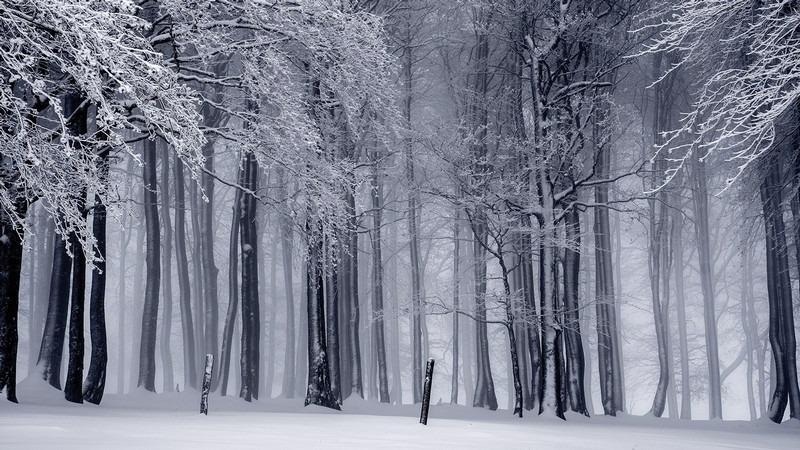Big trees play an extraordinary role in old-growth forests, providing multiple ecological benefits ranging from fire resistance to the production of strong genetic offspring. According to the latest research, big trees safeguard melting snowpacks in water-stressed environments, giving managers yet another reason to respect the behemoths.

Image Credit: Utah State University.
The study, co-authored by Michaela Teich, Kendall Becker, and Jim Lutz of the Department of Wildland Resources, as well as colleague Mark Raleigh, gives insight into the ecological puzzle of how large trees engage with forest snow.
A plentiful water supply enables trees to withstand hot summer temperatures, wildfires and bark beetle invasions. However, precipitation is scarce in the West during the hot summers. In terms of forests, a good, thick snowpack is like money in the bank; the longer the winter snowpack lasts into the spring and summer months, the more water is released into the soil and accessible to thirsty trees.
The melting snow contributes to the runoff that fills reservoirs in the West and benefits neighbourhoods. The study’s goal was to find approaches for managers to help this vital source of water last longer into the spring and summer months.
The trees themselves, ironically, are a drawback to constructing a snowpack in a forest. Tree branches capture snow before it falls to the ground and release it into the atmosphere via evaporation or sublimation. The ground right beneath large trees, cut off from the sky by branches, manages to accumulate only a thin layer of snow, whereas forest floors further away experience deeper accumulations.
Add longwave radiation to the mix; any tree with a good, strong heft to its trunks generates an invisible energy that humans cannot view (as light) or feel (as heat). However, the continual subtle bombardment imposed on the adjacent snowpack keeps adding just enough energy to draw snow back from the frozen threshold, reducing how long it can survive into the warm season.
Big trees, however, are not just bad news for snowpacks. The same wide branches that keep snow from falling directly on the ground beneath a tree also include a cooling stretch of shade that keeps direct sunlight from melting snow across a relatively wide radius encompassing a tree. The savings are substantial — they can outweigh the disadvantages of canopy cover and longwave energy.
With the stability of these aspects in mind, the researchers determined the appearance of a forest that maximized the benefits of shade while minimizing the negative effects of canopy and longwave energy.
What they discovered was a doughnut — or, at the very least, a doughnut-shaped zone surrounding large trees where snowpack could best survive, away from the longwave power generated by the trunk but still within reach of the cooling shade. The best forests for long-term snowpack had trees spaced so that these doughnut-shaped zones moved up against each other but did not coincide.
Snow is a key resource for fresh water supply and ecosystem function. Our study highlights that conserving big trees—the very trees that often survive forest fires—in forest ecosystems where fire is part of the ecological cycle can help facilitate both.
Michaela Teich, Study Co-Author, Utah State University
According to the researchers, spaced-out trees must be both healthy and large for the formula to work. Since dense tree canopies provide the most shade, they are healthy. They are big, since those trees are taller and cast more shade, as well as being more resistant to wildfires in the West.
This work, in a large Smithsonian-affiliated research site, lays out the fundamental issues involved in retaining snow on the ground. What we need now is more investigation into the specific tree species, sizes and densities that optimize snow retention in the different forest types of the American West.
Jim Lutz, Study Co-Author, Utah State University
Journal Reference:
Teich, M., et al. (2022) Large-diameter trees affect snow duration in post-fire old-growth forests. Ecohydrology. doi.org/10.1002/eco.2414.